| |
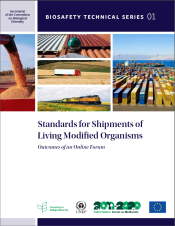 |
Table of Contents: |
| PART A: Outcomes of the Online Forum on Standards for LMO Shipments |
| PART B: Summary of standards and standard-setting bodies relevant to the handling, transport, packaging and identification of living modified organisms |
| Annex I - Themes and guiding questions for the Online Forum |
| Annex II - Statistical information on participation in the Online Forum |
| Annex III - Acronyms |
| |
| Go to the top of the page |
| |
|
| |
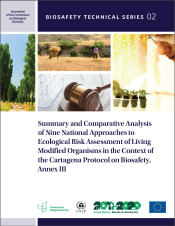 |
Table of Contents: |
| Introduction |
| Methods |
| Elements of risk assessment for LMOs (Brazil, Canada, China, Cuba, Germany, Japan, South Africa, United States) |
| Comparisons among risk assessment frameworks |
| Conclusion |
| |
| Go to the top of the page |
| |
|
| |
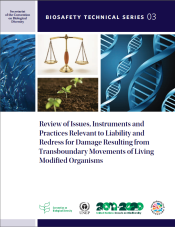 |
Table of Contents: |
| Section I: Concepts, Functions and Elements Relevant to Liability and Redress |
| Section II: Survey of Some International Agreements and Practices in the Field of Liability and Redress |
| Appendix I: Nagoya–Kuala Lumpur Supplementary Protocol on Liability and Redress to the Cartagena Protocol on Biosafety |
| Appendix II: Exercises to further understanding of the Nagoya – Kuala Lumpur Supplementary Protocol |
| |
| |
| Go to the top of the page
|
|
| |
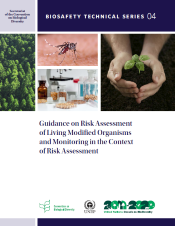 |
Table of Contents: |
| 1. Roadmap for Risk Assessment of Living Modified Organisms |
| 2. Risk Assessment of Living Modified Plants with Stacked Genes or Traits |
| 3. RIsk Assessment of Living Modified Plants with Tolerance to Abiotic Stress |
| 4. Risk Assessment of Living Modified Trees |
| 5. Risk Assessment of Living Modified Mosquitoes Species that Act as Vectors of Human and Animal Diseases |
| 6. Monitoring of Living Modified Organisms Released Into the Environment |
Note: This publication is the outcome of the Ad Hoc Technical Expert Group on Risk Assessment and Risk Management at its meeting in July 2016 (see report). The views reported in this publication were not considered, discussed or otherwise approved or adopted by the Conference of the Parties serving as the meeting of the Parties to the Cartagena Protocol on Biosafety and do not necessarily represent the views of the Parties to the Cartagena Protocol on Biosafety.
Go to the top of the page
|
| |
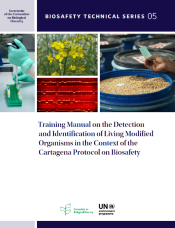 |
Table of Contents: |
| 1. Overview of Biosafety and the Cartagena Protocol on Biosafety |
| 2. Overview of the Detection and Identification of Living Modified Organisms |
| 3. Sample Preparation and Extraction |
| 4. Techniques for Detection and Identification |
| 5. Introduction to Quality Assurance/Quality Control Standards |
| 6. Reporting |
| |
| |
| Go to the top of the page |
|
|